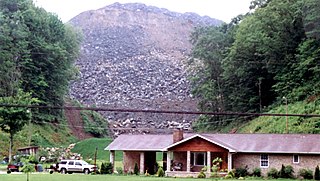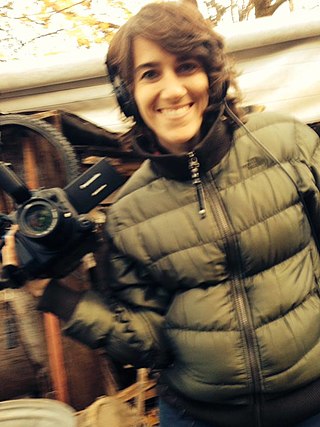
Mountaintop removal mining (MTR), also known as mountaintop mining (MTM), is a form of surface mining at the summit or summit ridge of a mountain. Coal seams are extracted from a mountain by removing the land, or overburden, above the seams. This process is considered to be safer compared to underground mining because the coal seams are accessed from above instead of underground. In the United States, this method of coal mining is conducted in the Appalachian Mountains in the eastern United States. Explosives are used to remove up to 400 vertical feet of mountain to expose underlying coal seams. Excess rock and soil is dumped into nearby valleys, in what are called "holler fills" or "valley fills".

Surface mining, including strip mining, open-pit mining and mountaintop removal mining, is a broad category of mining in which soil and rock overlying the mineral deposit are removed, in contrast to underground mining, in which the overlying rock is left in place, and the mineral is removed through shafts or tunnels.

Massey Energy Company was a coal extractor in the United States with substantial operations in West Virginia, Kentucky and Virginia. By revenue, it was the fourth largest producer of coal in the United States and the largest coal producer in Central Appalachia. By coal production weight, it was the sixth largest producer of coal in the United States.
Chet Pancake is an American filmmaker and musician. He is a co-founder of the Red Room Collective, the High Zero Foundation, the Charm City Kitty Club and the Transmodern Festival. He is currently an assistant professor in the Film and Media Arts Program at Temple University and director of the Black Oak House Gallery. His documentary film Black Diamonds (2006), an examination of mountaintop removal mining, has received a number of awards.

Stefan Schaefer is an American writer, director and producer of films and television.

Julia "Judy" Belle Thompson Bonds was an organizer and activist from the Appalachian Mountains of West Virginia, United States. Raised in a family of coal miners, she worked from an early age at minimum wage jobs. Bonds was the director of Coal River Mountain Watch (CRMW). She has been called "the godmother of the anti-mountaintop removal movement."
Arch Resources, previously known as Arch Coal, is an American coal mining and processing company. The company mines, processes, and markets bituminous and sub-bituminous coal with low sulfur content in the United States. Arch Resources is the second-largest supplier of coal in the United States, behind Peabody Energy. As of 2011 the company supplied 15% of the domestic market. Demand comes mainly from generators of electricity.
CJ Follini is an American businessman. He is the founder of several alternative investment funds in commercial real estate, fine art, and private credit. He is also the founder of the nonprofit financial education platform Noyack Wealth Club.

Big Coal: The Dirty Secret Behind America's Energy Future is a book by Jeff Goodell which claims that coal mining is one of America's largest and most influential industries. Goodell suggests that coal mining is deadly and environmentally destructive.
Maria Gunnoe is a native West Virginian who opposes mountaintop removal mining, and is a winner of the Goldman Prize and Wallenberg Medal.
Mountaintop Removal is a 2007 documentary film directed by Michael O'Connell. The film explores how mountaintop removal mining in West Virginia has affected local communities. Filmed over a two-year period, Mountain Top Removal features community advocates, such as Ed Wiley, Larry Gibson, Julia Bonds, Maria Gunnoe, and Mountain Justice Summer volunteers, in their efforts to oppose the destruction of Southern Appalachia's natural landscape. The film includes commentary from Jeff Goodell, author of Big Coal: The Dirty Secret Behind America's Energy Future, geologists Dr. William Schlesinger and Dr. Peter Taft, and also Bill Raney, President of the West Virginia Coal Association. The film won the Reel Current Award at the 2008 Nashville Film Festival. Mountaintop Removal also received a Jury award at the 2008 Wild and Scenic Film Festival, Audience award at the 2008 Woods Hole Film Festival and was screened at The Lincoln Center on Earth Day April 22, 2008. The film is currently being distributed nationwide on PBS through NETA. The film's soundtrack includes music by Jim Lauderdale, Donna the Buffalo, John Specker and Sarah Hawker.
Mining in the United States has been active since the beginning of colonial times, but became a major industry in the 19th century with a number of new mineral discoveries causing a series of mining rushes. In 2015, the value of coal, metals, and industrial minerals mined in the United States was US$109.6 billion. 158,000 workers were directly employed by the mining industry.
The Last Mountain is a feature-length documentary film directed by Bill Haney and produced by Haney, Clara Bingham and Eric Grunebaum. The film premiered at the 2011 Sundance Film Festival and went into general release on June 3, 2011. The film explores the consequences of mining and burning coal, with a particular focus on the use of a method for coal strip-mining in Appalachia commonly known as mountaintop removal mining.

Sand Wars is a documentary by director Denis Delestrac and produced by Rappi Productions, La Compagnie des Taxi-Brousse, InfomAction, Arte France, with the support of The Santa Aguila Foundation.
Mountain Justice is a grassroots movement established in 2005 to raise worldwide awareness of mountaintop removal mining and its effects on the environment and peoples of Appalachia. The group seeks to encourage conservation, efficiency, solar and wind energy as alternatives to all forms of surface mining. It self-describes as "a regional Appalachian network committed to ending mountaintop removal". It seeks justice because the mountaintop removal (MTR) it opposes is a form of coal mining known as mountaintop removal mining which produces coal sludge toxic waste which is stored in a dam on the mountain and leaches into the groundwater, which poisons the environment, which defaces the top of the mountain, and which is not stopped due to political corruption.

The Hobet 21 Coal Mine in West Virginia was operational between 1974 and 2015. Straddling the border of Boone County and Lincoln County in the Appalachian Mountains, the Hobet 21 mine was one of the largest mountaintop-removal coal mining operations in West Virginia. Originally owned by Fil Nutter, the mine used both underground mining and strip mining techniques, and later even more intensive surface mining using a dragline. Increasing productivity and profitability encouraged workers to successfully strike for their health plan in 1993, which resulted in unusually thorough coverage for mine workers at this time. The Hobet mine was incorporated into Arch Coal in 1997, along with several other mines, following booming coal demand. The mine was sold two more times: to Magnum Coal in 2005 and to Patriot Coal in 2008. Patriot Coal subsequently went bankrupt in 2015, and the Hobet site was passed into a Virginia-based conservation firm who continued to mine the land while reclaiming and planting trees to offset carbon emissions for other companies.

Environmental justice and coal mining in Appalachia is the study of environmental justice – the interdisciplinary body of social science literature studying theories of the environment and justice; environmental laws, policies, and their implementations and enforcement; development and sustainability; and political ecology – in relation to coal mining in Appalachia.

Environmental issues in Appalachia, a cultural region in the Eastern United States, include long term and ongoing environmental impact from human activity, and specific incidents of environmental harm such as environmental disasters related to mining. A mountainous area with significant coal deposits, many environmental issues in the region are related to coal and gas extraction. Some extraction practices, particularly surface mining, have met significant resistance locally and at times have received international attention.

Sally Rubin is an American documentary film director, producer, editor, and professor. She is best known for her work on the documentary films Mama Has a Mustache, Hillbilly, Deep Down, Life on the Line, and The Last Mountain.

Lorena Luciano is an Italian documentary filmmaker best known for her documentary film It Will Be Chaos, winner of an Emmy Award for Outstanding Current Affairs documentary in 2019. and winner of Best Directing Award at the Taormina International Film Festival. As a director, editor, and writer she has worked on feature documentaries and TV series for national and international cable TV and streamers. She is the recipient of the Sundance Institute/A&E Brave Storyteller Award, and her work has been recognized with art grants from the MacArthur Foundation, the New York State Council on the Arts, and the Ben & Jerry's Foundation.












